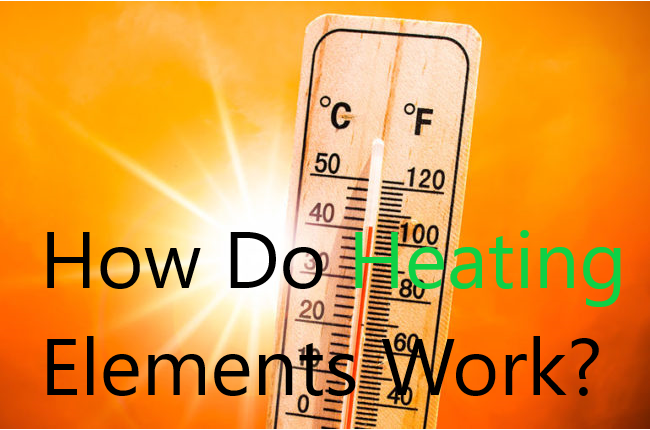All through your day, you might acknowledge various devices such as a heater, electric iron, electric toaster, and a heating rod that undoubtedly make your work easier and better done, but have you ever wondered how these heating devices work?
Well, to answer your question, all these devices function on a common principle, and that is the Joules Law of Heating. Joules concluded the fact that electrical energy can be used for producing heat over time as the current flows through a device.
But scientifically, there’s much more to it than just a simple definition. Let’s find out how heating elements work and what are significant in the dairy-based devices that you use in your home.
How Do Heating Elements Work?
Heating Elements work on the principle that as the current flowing through a conductor increases, it causes an increase in the resistance of the wire. This resistance produces heat, and the heat makes the appliances function. This principle was given by Joule, and therefore, it is known as Joules Law of Heating.

Basically, a heating element converts electrical energy into heat energy with the due passage of time. The higher the resistance created by the wire, the more heat generated by the device and vice versa. Also, ensure to have an electric appliance that is composed of nichrome wire as nichrome has one of the highest resistances, thereby it gives an unmatchable efficiency to the device.
Types of Heating Elements
Having read about the process in which a heating element works, here, and you will be told of the types of heating elements that exist in various devices.
•Metal Heating Elements
The most common and widely used heating elements are the ones composed of metal. These heating elements are made up of nichrome, and they contain a four is to one ratio of nickel and chromium. Nichrome is known for providing heavy resistance resulting in excessive heat; hence the device functions well.
Metal Heating Elements can be found in electric toasters, heaters, and sometimes even dryers. Usually, the electrical appliance has a wire of nichrome that heats up with time and gives seamless results.
•Composite Heating Elements
Composite Heating Elements are an efficient and highly functional mixture of metals such as nickel and chromium, that is, nichrome wire, and some functional ceramics that provide higher resistance.
The more excellent the resistance offered by the nichrome wire, the more heat produced. Consequently, the electric device becomes more powerful and robust.
Composite Heating Elements are primarily used in appliances such as toasters, ovens, stoves, and coffee makers. Composite Heating Elements are combined together in the form of a rod which is then fitted into the device.
•PTC Heating Elements
PTC Heating Elements do not contain or work with the assistance of a nichrome wire or ceramics. Instead, the PTC Heating Elements are formed by a conducting rubber mainly present in heaters.
The principle of the PTC Heating Elements is to increase the resistance with a gradual increase in the temperature. This is the primary reason these heating elements are present in heaters that regulate the temperature accordingly.
Factors on Which Heat Produced by the Heating Elements Depend
According to Joule, there are three primary factors on which the heat produced by the heating element depends. These factors are discussed below.
•Current– The heat produced by a conductor is directly proportional to the amount of current that flows through the conductor, which means the more the value of current passing through the nichrome wire, the more will be the heat that will be produced in the electric device. At times, excessive current can also lead to overloading and then short-circuiting.
•Resistance– Resistance means to stop the flow of current in the best possible manner. Evidently, the higher the amount of current that flows through the conductor, the more force will be required to stop the conventional current flow, leading to an ultimate increase in the resistance.
The more excellent the resistance of a wire, the more will be the heat produced, and so the better will be the performance of the device. Usually, the heating elements are composed of nichrome wire because they have higher resistance.
• Time Period– Lastly, Joule said that the heat generated in an electrical appliance also depends on the period the current flows in the device. Longer hours of current flow will ensure more resistance and evidently more heat. Hence, any device that operates for two to four hours continuously is expected to have a higher heating effect.
CONCLUSION
All the appliances that produce heat or are used for heating purposes work on Joule’s heating principle. The electricity supplied to the device converts it into heat energy over time. This heat energy makes the appliance function. Examples of heating elements include toaster, electric iron, coffee machines, ovens, furnaces, etc.
While using a heating element, ensure not to pass a higher current than the device can accept. This would otherwise lead to the device getting dysfunctional. Also, use an appliance that uses nichrome wire because it gives high performance and makes the device robust.